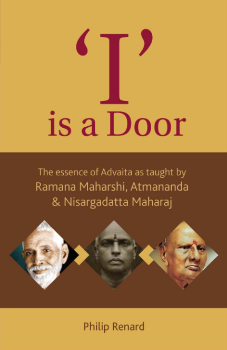
Philip Renard appears in the ‘Teacher Lineage’ charts in Advaita Vision under Nisargadatta Maharaj but he has also been significantly influenced by both Ramana Maharshi and Atmananda Krishna Menon. In his first English language book, Philip writes about Advaita as communicated by all of these modern sages.
An extract from the book (about Atmananda) can be read here.
I have not yet read the book, which has just been published. It has a chapter devoted to each teacher, followed by a summary chapter, short biographies, extensive ‘Notes’ and bibliography.
It is available from Amazon in paperback and Kindle formats:
Paperback: Buy from Amazon US ($14.00) Buy from Amazon UK (£11.00)
Kindle: Buy from Amazon US ($6.06) Buy from Amazon UK (£4.59)
